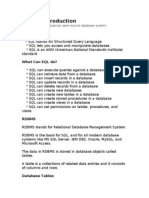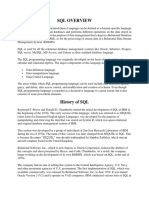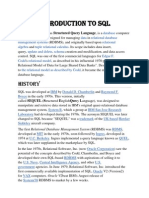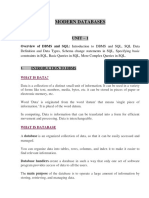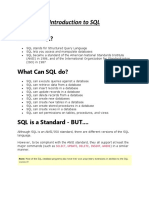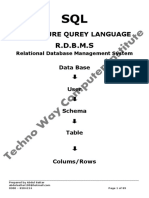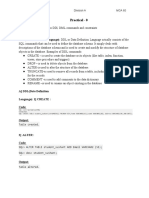0% found this document useful (0 votes)
44 views5 pagesMYSQL Vs
The document explains the differences between SQL and MySQL, highlighting that SQL is a standard language for relational databases while MySQL is an open-source relational database management system that extends SQL with additional features. It outlines the four sublanguages of SQL: DQL, DDL, DCL, and DML, and describes MySQL's characteristics, uses, and its popularity among major websites and content management systems. Additionally, it provides an overview of RDBMS, database tables, and important SQL commands.
Uploaded by
shaikh09arshadCopyright
© © All Rights Reserved
We take content rights seriously. If you suspect this is your content, claim it here.
Available Formats
Download as DOCX, PDF, TXT or read online on Scribd
0% found this document useful (0 votes)
44 views5 pagesMYSQL Vs
The document explains the differences between SQL and MySQL, highlighting that SQL is a standard language for relational databases while MySQL is an open-source relational database management system that extends SQL with additional features. It outlines the four sublanguages of SQL: DQL, DDL, DCL, and DML, and describes MySQL's characteristics, uses, and its popularity among major websites and content management systems. Additionally, it provides an overview of RDBMS, database tables, and important SQL commands.
Uploaded by
shaikh09arshadCopyright
© © All Rights Reserved
We take content rights seriously. If you suspect this is your content, claim it here.
Available Formats
Download as DOCX, PDF, TXT or read online on Scribd
/ 5























